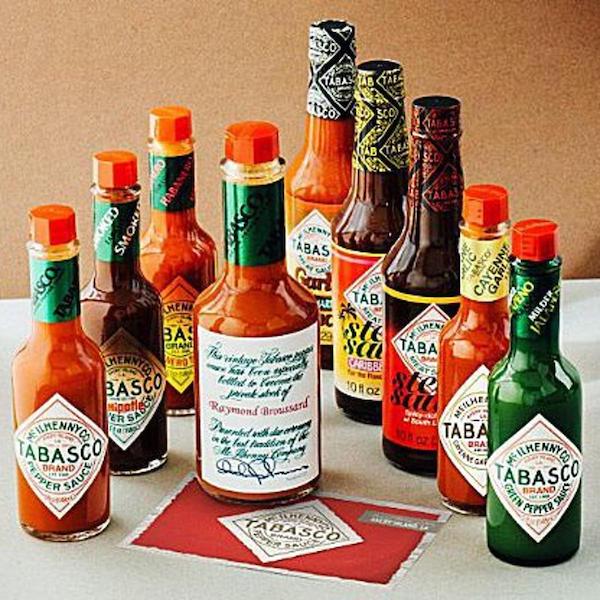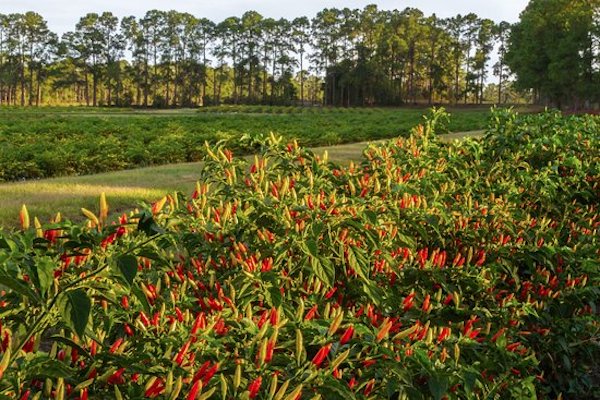Tabasco sauce is a staple in many American kitchens. It’s so popular in fact that the brand name “Tabasco” is just another word for “hot sauce” in a lot of places. The name for the sauce stems from the peppers it’s made with, tabasco peppers, which originated in Mexico. The man behind the iconic hot sauce – which was the very first hot sauce, by the way – is Edmund McIlhenny, an American businessman and manufacturer that got his start in banking.
Born in Hagerstown, Maryland, in 1815, Edmund McIlhenny moved to New Orleans, Louisiana, around 1840, where he found work in the Louisiana banking industry. By the start of the American Civil War, he had acquired a small fortune and became an independent bank owner. But during the war, he and his family were forced to flee to Texas where he served as a civilian employee of the Confederate army, first as a clerk, then as a financial agent for the paymaster. McIlhenny was ruined by the end of the Civil War amid the economic collapse of the South and he had trouble finding work in New Orleans when he returned. Eventually, he and the family landed at his in-law’s sugar plantation on Avery Island in southern Louisiana. There, McIlhenny tended to a garden where he grew a variety of vegetables but his prized plants were the spicy peppers.
The history is murky but McIlhenny appears to have acquired the peppers from his friend Maunsel White who had also played around at developing a hot sauce, though he died in 1862 with no plans of commercializing it. McIlhenny spent years perfecting his own and now famous tabasco pepper recipe, first bottling it in 1868 and sending “samples” to friends. The feedback was overwhelmingly positive and a year later, the sauce was selling in New Orleans’ grocery stores for $1 a bottle. In 1870 McIlhenny obtained a patent for the sauce, which he packaged in cork-top two-ounce bottles with diamond logo labels very similar in appearance to those in present-day use.
Tabasco managed to break into other markets outside the Gulf Coast over the following years, including major cities on the East coast, helped by major nineteenth century food manufacturer and distributor E. C. Hazard and Company. McIlhenny died in 1890, with no clue as to how significant his company would become. The family’s historian says he thought of himself “more as an antebellum banker than as a sauce manufacturer” and made no mention of Tabasco sauce in an autobiographical sketch composed toward the end of his life, nor was it mentioned in his obituaries. By 1901, Tabasco was achieving international renown thanks largely to the marketing wizardry of his sons John and Edward. Today, it is the number one selling hot sauce in the world. You can actually visit the Tabasco factory and museum on Avery Island, which also has a Tabasco restaurant. Check it out HERE. Below are some more interesting facts about McIlhenny’s famous Tabasco Sauce:
Just Three Ingredients: Three ingredients are used to make Tabasco – peppers, vinegar, and salt. Originally all peppers used in Tabasco were grown on Avery Island. Today peppers grown on the Island are used to produce seed stock, which is then shipped to foreign growers primarily in Central and South America. Most of the salt used is actually extracted from the Avery Island salt dome, the largest one in Louisiana. Peppers are ground into a mash on the day of harvest and placed along with salt in white oak barrels previously used for whiskey of various distilleries. Tabasco originally aged for 30 days in stone jars. Today, it is aged for three years. When it’s finished, the mash is strained to remove skins and seeds. The strained liquid is then mixed with distilled vinegar, stirred occasionally for a month, and then bottled as finished sauce.
What’s With Those Weird Bottles? Tabasco’s iconic bottles have a really odd history for a food company! According to Paul McIlhenny, the sixth McIlhenny to run the company, the legend behind the bottle is that Edmund initially used old cologne bottles to package his Tabasco sauce. The sprinkler would allow something to be dispensed by the drop or the dash rather than poured on, which he felt was more practical for the highly concentrated sauce. While they no longer use cologne bottles, the bottles used today still possess that same technology.
From Air Force One to Space: One-eighth-ounce bottles of Tabasco, bearing the presidential seal, are served on Air Force One. During the Vietnam War, Brigadier General Walter S. McIlhenny issued The Charlie Ration Cookbook that came wrapped around a wo-ounce bottle of Tabasco sauce in a camouflaged, water-resistant container. The US military has included Tabasco sauce in Meals, Ready-to-Eat (MREs) since the 1980s. The Australian, British, and Canadian armies also issue small bottles of Tabasco sauce in their rations. McIlhenny is one of just a few U.S. companies to have received a royal warrant of appointment that certifies the company as a supplier to Queen Elizabeth II. Tabasco also appeared on the menu of NASA’s Space Shuttle program and went into orbit on the Shuttles. It was on Skylab and on the International Space Station and is popular with astronauts as a means of countering the bland food they have in space. (Sources: New York Times, Taste Atlas, Wikipedia)










